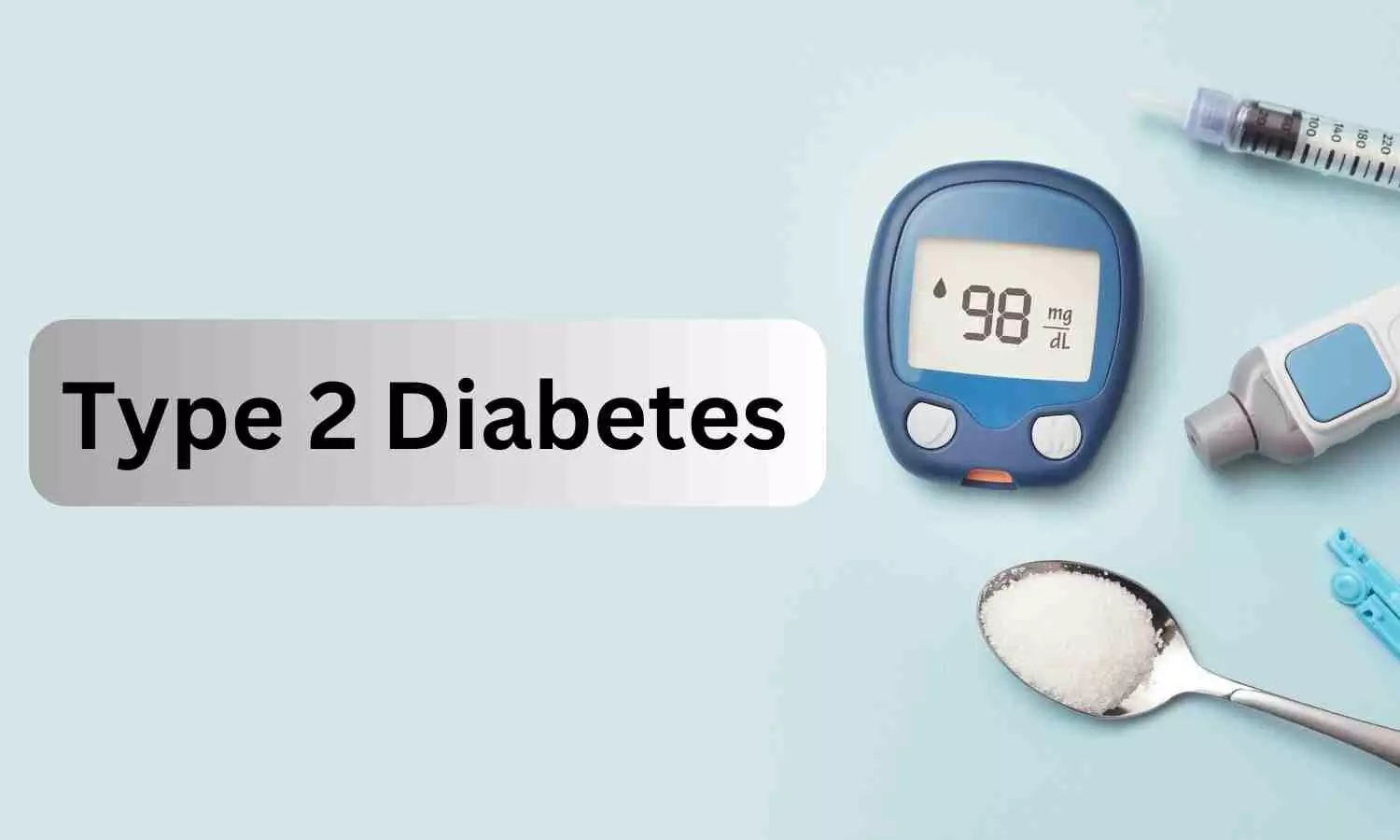Happy music could help you recover from motion sickness
Powered by WPeMatico
Powered by WPeMatico
Powered by WPeMatico
Powered by WPeMatico

Madri: Among low-risk patients with acute MI who underwent early complete revascularisation and received one month of dual antiplatelet therapy (DAPT), P2Y12 inhibitor monotherapy was noninferior to continued DAPT for adverse cardiovascular and cerebrovascular events, while reducing bleeding risk.
These late-breaking findings were presented in a Hot Line session today at ESC Congress 2025 and simultaneously published in New England Journal of Medicine.
Current ESC Guidelines recommend 12 months of DAPT − aspirin plus a potent P2Y12 inhibitor − after percutaneous coronary intervention (PCI) for MI.2 Principal Investigator of the TARGET-FIRST trial, Professor Giuseppe Tarantini from the University of Padua, Italy, explained: “No randomised trials have previously assessed early aspirin discontinuation in acute MI patients who achieve early, complete revascularisation with modern stents. In such cases, bleeding risk may outweigh residual ischaemic risk, making antiplatelet therapy de-escalation attractive.”
In this open-label randomised controlled trial conducted at 40 European centres, eligible adults with an ST-segment elevation MI (STEMI) or non-STEMI underwent complete revascularisation within seven days using a contemporary drug-eluting stent and completed one month of DAPT without adverse events.
They were randomised 1:1 to continue DAPT or switch to P2Y12 inhibitor monotherapy for 11 months. The primary endpoint was a composite of all-cause death, MI, stent thrombosis, stroke or Bleeding Academic Research Consortium (BARC) type 3/5 bleeding at 11 months. Noninferiority was defined as an absolute difference ≤1.25 percentage points in the upper bound of the two-sided 95% CI.
The mean age of the 1,942 randomised patients was 61 years and 21.6% were women.
The primary endpoint occurred in 2.10% of the P2Y12 inhibitor monotherapy group and 2.18% of the continued DAPT group (difference –0.09 percentage points; 95% CI –1.39 to 1.20; p=0.021 for noninferiority). MI occurred in 0.7% vs. 1.1%, definite/probable stent thrombosis in 0.1% vs. 0.0% and ischaemic stroke in 0.3% vs. 0.2%, respectively. BARC type 3/5 bleeding occurred in 0.7% in each group.
The main secondary endpoint (BARC type 2/3/5 bleeding) was significantly lower with P2Y12 inhibitor monotherapy (2.65% vs. 5.57%; hazard ratio [HR] 0.46; 95% CI 0.29 to 0.75; p=0.002).
The patient-oriented composite outcome (all-cause death, MI, stent thrombosis, stroke, repeat ischaemia-driven revascularisation or BARC type 2/3/5 bleeding) occurred in 4.5% in the monotherapy group and 7.2% in the DAPT group (HR 0.61; 95% CI 0.42 to 0.89). Therapy adherence at 11 months was high in both groups (86.9% with monotherapy and 88.6% with DAPT).
Professor Tarantini concluded: “In low-risk acute MI patients with early complete revascularisation and no complications after one month of DAPT, switching to P2Y12 inhibitor monotherapy-maintained protection from ischaemic events and reduced bleeding. These results reflect the benefits of modern stents, high procedural success and optimal medical therapy, making early aspirin discontinuation feasible in this selected population.”
Powered by WPeMatico
Powered by WPeMatico
Powered by WPeMatico

People with learning disabilities progress faster to severe type 2 diabetes and are at greater risk of dying from their condition than people without these disabilities, suggests research published in the open access journal BMJ Open Diabetes Research & Control.
This is despite having better overall blood glucose control and similar risks of vascular complications, the findings indicate.
Around 1.5 million people (950,000 adults) in the UK have a learning disability, which includes conditions such as Down syndrome and cerebral palsy, note the researchers.
Type 2 diabetes in those with learning disabilities can be challenging as it requires a substantial amount of monitoring and management, which they may not always be able to do, potentially compromising their blood glucose control, explain the researchers.
But there’s been no large study on the potential impact of learning disabilities on the outcomes of type 2 diabetes, including blood glucose control, progression to microvascular and macrovascular complications, initiation of insulin therapy (proxy for severe disease), and risk of death, they add.
Macrovascular complications refer to stroke, coronary heart disease, heart failure, peripheral vascular disease, or amputation more than 6 months after diagnosis of type 2 diabetes. Microvascular complications refer to diabetic nephropathy, retinopathy, or neuropathy.
In a bid to plug this knowledge gap, the researchers extracted anonymised medical records for 352,215 adults newly diagnosed with type 2 diabetes in primary care between January 2004 and January 2021 from the UK Clinical Practice Research Datalink (CPRD) GOLD.
Of these, 280,300 met the eligibility criteria for inclusion in the study, 2074 of whom had a learning disability when they were diagnosed.
They tended to be younger (average age 51 vs 64) and have a shorter monitoring period. And they included higher proportions of men, people of White ethnicity, people living with severe obesity and in areas of greatest deprivation than those without learning disabilities.
They were also more likely to be taking medication for diabetes and high blood pressure and to have more complications related to diabetes at the time of their diagnosis.
Even after adjusting for these potentially influential risk factors they were 19% less likely to have poor blood glucose control than those without learning disabilities 5 years after diagnosis.
But they were 20% more likely to progress faster to severe disease and the need for insulin therapy than those who didn’t have learning disabilities.
And they were around twice as likely to die from any cause and specifically from diabetes despite having similar risks of vascular complications as those who didn’t have learning disabilities.
This is an observational study, and as such, can’t establish cause and effect, and the researchers acknowledge that large numbers of values for the outcome variables for blood glucose control were missing among those with learning disabilities. Complication rates may therefore have either been underdiagnosed or under-recorded, they suggest.
“Our finding of higher rates of insulin initiation in those with learning disabilities warrants further investigation into whether this is due to poorer glycemic control at presentation (and therefore faster advancing type 2 diabetes) or due to having a greater degree of clinical surveillance,” say the researchers.
“Future research into the mechanisms behind this could help reduce health disparities for people with [type 2 diabetes] and learning disabilities,” they add.
Reference:
Powered by WPeMatico

Taking low-dose colchicine daily may slow the progression of a common acquired gene mutation found in the blood of older adults that can lead to certain blood cancers and increased risk of cardiovascular disease, according to a subanalysis of the LoDoCo2 trial published in JACC, the flagship journal of the American College of Cardiology, and simultaneously presented at ESC Congress 2025.
Clonal hematopoiesis (CH) is an acquired mutation in blood stem cells that is linked to risk of developing leukemia and other blood cancers. It is also associated with a more than 1.5-fold increased risk of cardiovascular disease, including coronary heart disease, heart failure and arrhythmias. The most common driver genes that can lead to CH are DNMT3A, TET2 and ASXL1, which represent about 80% of CH cases. Research has shown that over 10% of people 70 years old and older carry one or more of these mutations and the risk increases with age.
In this study, researchers looked at a subset of participants in the LoDoCo2 Trial, which previously found that 0.5 mg daily of colchicine reduced the risk of cardiovascular disease by 31% in people with chronic coronary disease, to determine if colchicine also modified CH growth in the same individuals. Colchicine is a medication commonly used to treat gout and other inflammatory conditions.
Participants provided four blood samples: at the beginning of the study, after 30 days, one-year post randomization and at the end of the study. Their blood DNA was sequenced to detect and quantify CH mutations and analyze changes over time. Also, two blood biomarkers of inflammation were measured at the first three timepoints.
Those randomized to colchicine had a non-significant 6.3% annual increase in the number of overall mutated CH cells compared to a significant 14.9% increase in those taking placebo. Colchicine was associated with significantly attenuated clonal growth in TET2 CH, specifically, with a 9.1% annual increase in TET2 clone size in the colchicine group, compared with a 29.6% increase in the placebo group.
“These findings are striking in part because larger CH clones have been more strongly linked to both cardiovascular disease and cancer, and TET2 CH in particular has been consistently associated with increased cardiovascular risk,” said Michael Honigberg, MD, MPP, FACC, cardiologist at Massachusetts General Hospital and the study’s senior author. “Our study suggests that individuals with CH, especially TET2-mutated CH, may derive particular benefit from colchicine, including for cardiovascular risk reduction.”
In a second study published in JACC and being presented at ESC Conference 2025, researchers looked at whether CH’s relevance to cardiovascular disease risk decreased as women got older. Older adults have the highest risk of cardiovascular disease, and some previous studies have failed to demonstrate an association between CH and CVD after age 70.
Researchers in this study looked at over 6,600 women in the Women’s Health Initiative Long Life Study who had a median age of 80. They found that several CH subtypes (TET2, ASXL1, and JAK2) were associated with incident CVD, suggesting that CH remains associated with cardiovascular health into later life.
“Clonal hematopoiesis is emerging as a key link between aging, cardiovascular disease and cancer,” said Harlan Krumholz, MD, FACC, JACC Editor-in-Chief and Harold H. Hines Jr Professor of Medicine, Yale University School of Medicine. “This study advances our understanding of how inflammation and genetic changes in blood cells may shape cardiovascular risk, pointing to new opportunities for prevention and treatment.”
Reference:
Common inflammation drug may slow blood mutation, related CVD risk, Meeting: ESC Congress 2025.
Powered by WPeMatico

A new study published in the journal of Diabetologia showed that the intensity of menopausal symptoms is associated with moderate to severe abnormalities in glucose control, which are reported by almost two-thirds of postmenopausal women with type 1 diabetes.
The amount of insulin needed by women with type 1 diabetes varies throughout pregnancy and the menstrual cycle. Whether women with type 1 diabetes notice changes in glucose control during and after the menopausal transition has not yet been investigated. Thus, this study evaluated the relationships between glucose regulation and type 1 diabetes.
To find out if women with type 1 diabetes think that their glucose management has changed since their last menstrual cycle, this study performed a cross-sectional survey. In the Netherlands, adverts for the online surveys were placed in hospitals and on websites for individuals with type 1 diabetes. Type 1 diabetic postmenopausal women (≥1 year of amenorrhea) between the ages of 45 and 65 were included.
The study excluded participants who had been diagnosed with postmenopausal diabetes, premenopausal hysterectomy, or primary amenorrhea. Using a 5-point Likert scale, the main result measured how much individuals thought their glucose control had changed after their last menstrual cycle. The Greene climacteric scale (GCS) was used to measure the severity of menopausal symptoms.
A total of 159 ladies in all filled out the relevant questions. The average age of the participants was 54.9 years, their average duration of diabetes was 30.3 years, and their average age at menopause was 50.1 years.
In all, moderate to severe postmenopausal alterations in glucose control were reported by 67.4% of respondents. 41.9% reported higher glucose levels, 19.6% reported lower levels, and 38.5% reported no change. 55.0% of respondents said glucose fluctuations were more common, while 18.1% said they were less often.
While 38.5% of women reported more hypoglycemic incidents and 28.0% fewer, 61.6% of women reported an increase in hyperglycemic events. The severity of menopausal symptoms was higher after menopause than before (mean GCS 18.8 vs. 11.7; p<0.001).
The likelihood of experiencing glycemic alterations was positively correlated with the intensity of symptoms (adjusted OR 1.04; p=0.014). Furthermore, 57.2% reported having poor sleep quality (PSQI >5), although this did not correlate with perceived increases in blood sugar levels (adjusted OR 1.10; p=0.731).
Overall, because women going through the menopausal transition may encounter changes in glucose metabolism that may effect their treatment goals, the results illuminate the need of medical providers being aware of these changes while treating women with type 1 diabetes.
Source:
Speksnijder, E. M., Simsek, S., Bisschop, P. H., Stenvers, D. J., Siegelaar, S. E., & MenoPause Consortium. (2025). Perceived blood glucose regulation after menopause: a cross-sectional survey in women with type 1 diabetes in the Netherlands. Diabetologia. https://doi.org/10.1007/s00125-025-06518-z
Powered by WPeMatico

A new HIV antiretroviral shows promise as a long-acting, oral prophylactic agent, according to a new study by Izzat Raheem, Tracy Diamond and colleagues from Merck & Co., Inc., Rahway, NJ, USA, published August 26th in the open-access journal PLOS Biology.
HIV pre-exposure prophylaxis (PrEP) is a key part of reducing the number of new HIV infections. The most common oral PrEP therapies, consisting of once-daily pills, are highly effective at protecting people from acquiring HIV, but they only work if taken properly. Currently, the only long-acting PrEP therapies require injection by a healthcare provider, which isn’t always feasible for people. Long-acting, oral PrEP therapies could facilitate adherence, provide greater privacy and discretion, reduce concerns about stigma, and improve accessibility for more people to initiate and continue on PrEP, ultimately helping to stem the tide of the nearly 1.3 million new HIV infections globally per year.
Researchers from Merck engaged in a lead optimization campaign to develop a novel nucleoside reverse transcriptase translocation inhibitor (NRTTI). NRTTIs are a new class of anti-HIV drugs that have shown potential for long-acting prophylaxis. They inhibit viral replication by more than one mechanism, including blocking translocation of reverse transcriptase on the growing viral DNA chain.
Using a known NRTTI, islatravir, as a starting point, researchers used several medicinal chemistry strategies to modify the structure and optimize it using both in vitro and in vivo assays. The lead compound, dubbed MK-8527, showed robust antiviral activity in vitro, and pharmacokinetics in animal studies demonstrated that it may be suitable as a long-acting oral therapy. Studies in humans are underway to assess the safety and tolerability of MK-8527 as a once-monthly oral pill in volunteers at low likelihood of HIV exposure, and at least one completed clinical study shows promising results.
Reference:
Izzat T. Raheem ,Vinay Girijavallabhan,Kerry L. Fillgrove,Shih Lin Goh,Carolyn Bahnck-Teets,Qian Huang,Fangbiao Li,Bang-Lin Wan,Gregory T. O’Donnell,Jonathan B. Patteson,Maria E. Cilento,Amrith Bennet, MK-8527 is a novel inhibitor of HIV-1 reverse transcriptase translocation with potential for extended-duration dosing, PLOS Biology, https://doi.org/10.1371/journal.pbio.3003308.
Powered by WPeMatico
